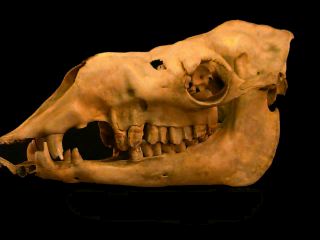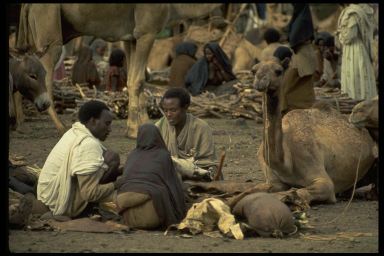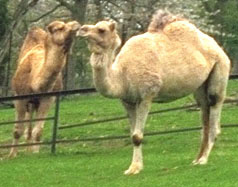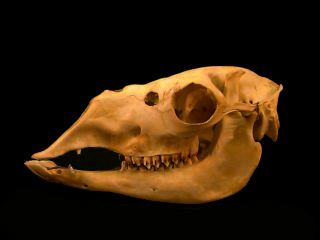
SUBORDER TYLOPODA: CAMELSThis suborder is intermediate between the Suina and the Ruminantia. All living tylopods are members of the family Camelidae, but there were several interesting extinct families:
FAMILY CAMELIDAE
Originally, camels were found only in North America, but they migrated elsewhere in the Pleistocene. Both modern members of the genus Camelus occur in the Old World. The dromedary (Camelus dromedarius) is very widespread, due to its domestication, although no wild population remains. The bactrian ( C. bactrianus) camel is less widely used by man, and only a few wild herds remain in central Asia. As long as the nomads of Asia and north Africa remain, camels probably have a secure future.
The camel is renowned for its adaptations to desert life:
Members of the Camelidae have:
Furthermore, the camels showed a reduction in the lateral toes far earlier than the ruminants, with the 2nd and 5th toes now completely absent they display a very advanced foot structure.
 Llamas at Edinburgh Zoo
The llama, and the related alpaca, were both domesticated around 4,500 years ago in South America. The llama is a beast of burden; the alpaca provides wool. It is not known whether they were ever wild. They may have been bred from wild species of Llama: either the mountain dwelling vicuna or the lowland guanaco. 50 million guanaco were once found in Patagonia alone: today there are only 500,000. None of these species have humps like the camels.
|












